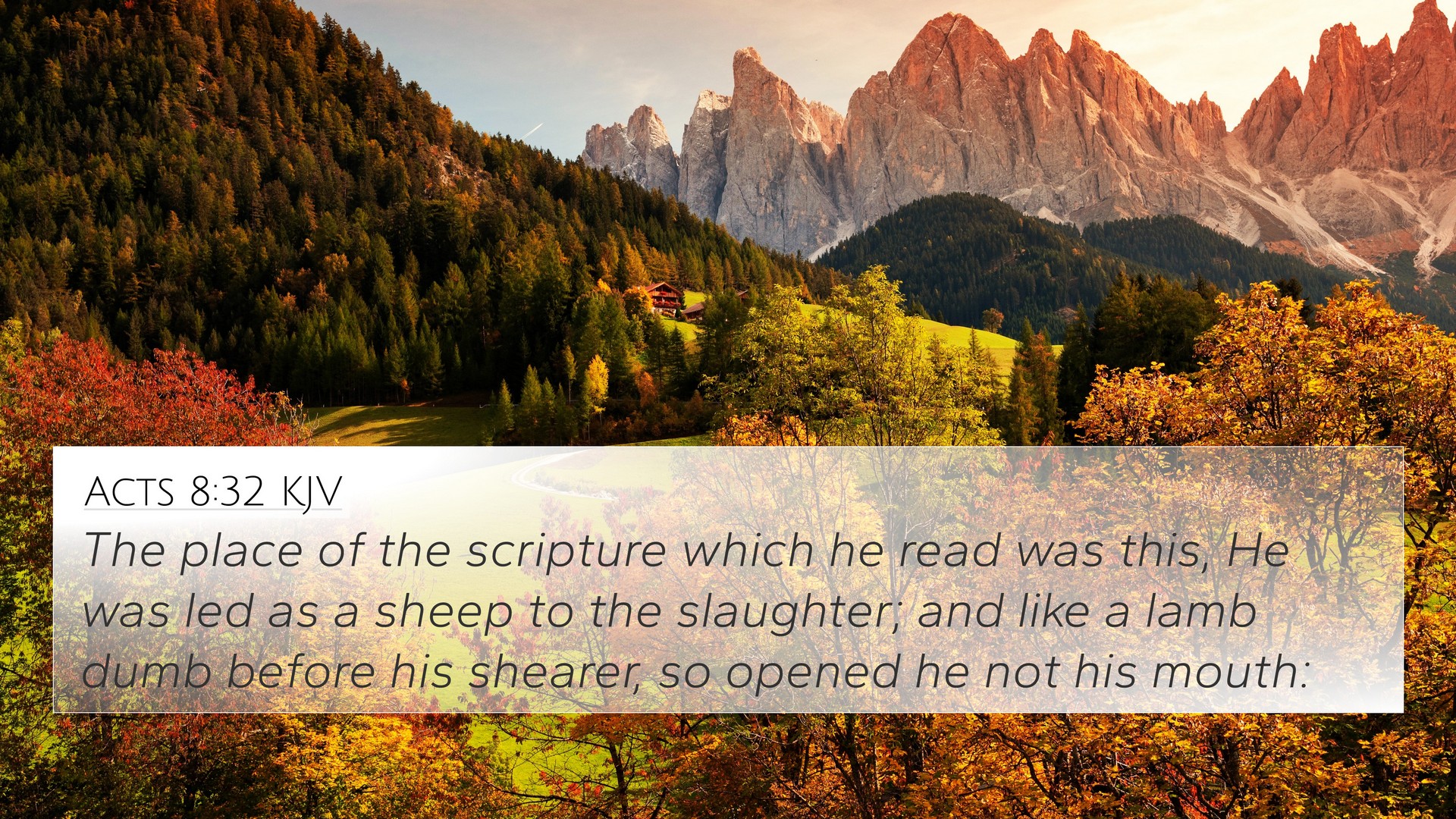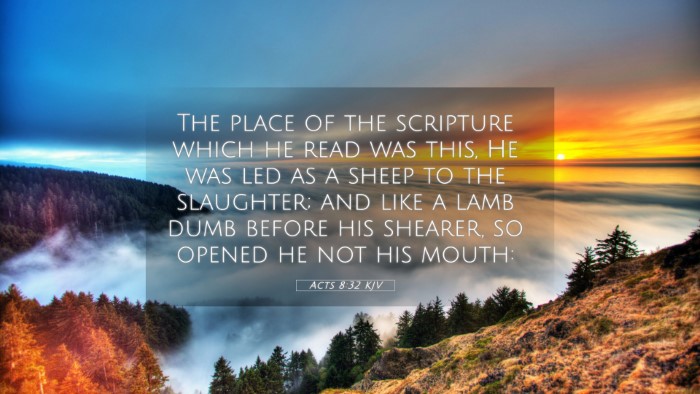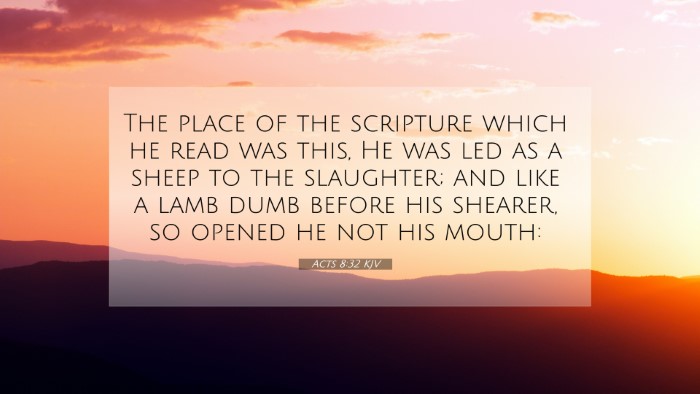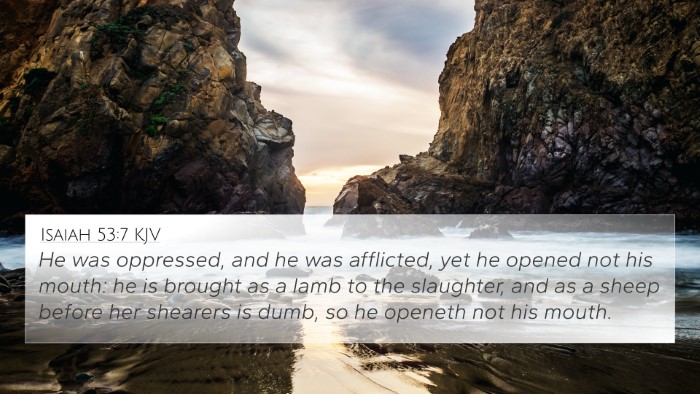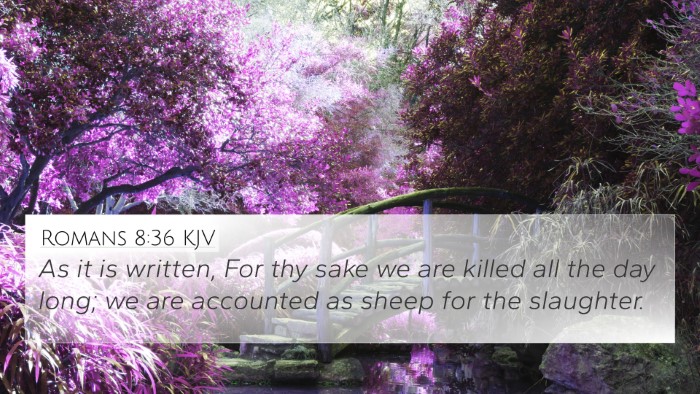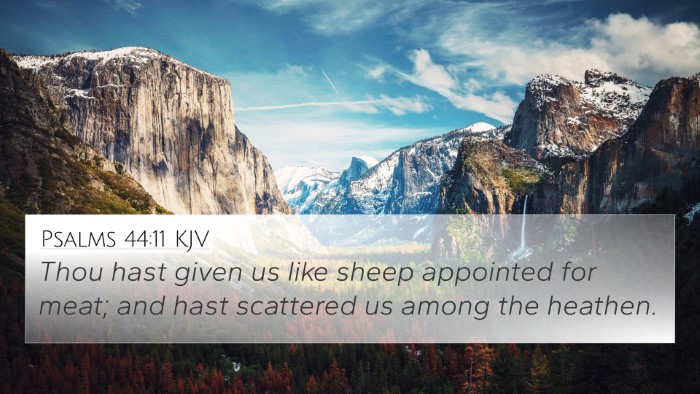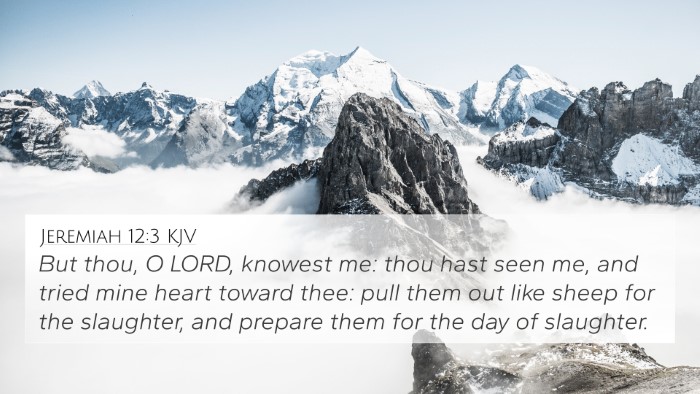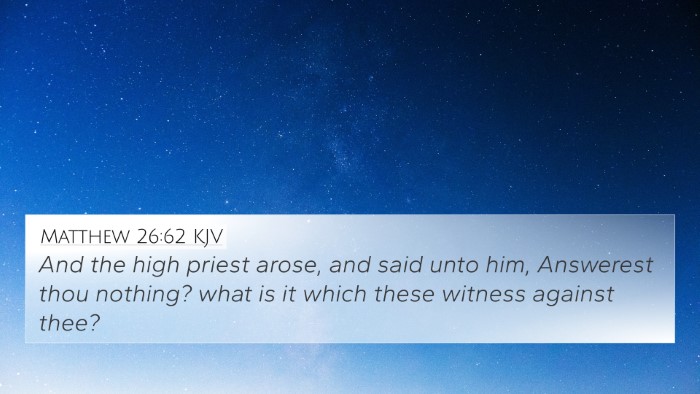Understanding Acts 8:32
Acts 8:32 states: "The place of the Scripture which he read was this, He was led as a sheep to the slaughter; and like a lamb dumb before his shearer, so opened he not his mouth."
This verse is part of the narrative where Philip encounters the Ethiopian eunuch, highlighting the importance of understanding Scripture and divine guidance. Below is a synthesized interpretation of this verse based on insights from public domain commentaries.
Verse Meaning and Interpretation
-
Contextual Background:
This verse references Isaiah 53:7, where the prophet describes the suffering servant. It illustrates themes of humility and obedience amid suffering, which foreshadows Christ's passion.
-
Symbolism of the Sheep:
Matthew Henry emphasizes the imagery of a sheep led to slaughter, representing innocence and submission. This highlights the idea of sacrificial love, particularly the sacrifice of Jesus for humanity.
-
Silence in Suffering:
Adam Clarke notes how the lamb's silence signifies the innocent nature of Christ, paralleling his quiet endurance before his accusers. It's a profound lesson on humility and restraint under trial.
-
Role of Philip:
Albert Barnes points out Philip’s role in guiding the eunuch's understanding of the Scriptures, showcasing the importance of proper interpretation and teaching in Christian faith.
Connections to Other Bible Verses
Acts 8:32 can be cross-referenced with the following Scriptures, creating a web of related themes:
- Isaiah 53:7-8 - Further elaboration on the suffering servant’s silence and unjust treatment.
- John 1:29 - John the Baptist identifies Jesus as the “Lamb of God,” establishing a direct link to sacrificial themes.
- 1 Peter 2:23 - Peter references Christ's silence during His suffering, advocating for the perfect example of endurance.
- Psalm 22:12-13 - Foreshadowing of Christ's passion, linking the themes of oppression and suffering.
- Acts 8:35 - This verse continues the discussion as Philip preaches Jesus to the eunuch, fulfilling the prophetic Scriptures.
- Mark 15:4-5 - Illustrates Jesus' silence before Pilate, paralleling the lamb's meekness.
- Romans 8:32 - Highlights God’s sacrificial love through Christ, reinforcing the themes in Acts 8:32.
Thematic Connections Across Scriptures
Understanding Acts 8:32 involves linking it to broader Biblical themes, such as sacrifice, obedience in suffering, and divine revelation.
1. Sacrifice and Redemption
The idea of sacrificial victims, which Jesus embodied, is threaded throughout the Bible. This can be related not only to the mentioned verses but also to Hebrews 9:28, which emphasizes Christ’s once-for-all sacrifice for sin.
2. Humility in Adversity
The teachings of Christ encourage believers to emulate His humility. This theme is echoed in Philippians 2:7, where Christ’s lower state is highlighted as an example for us.
3. Understanding Scripture
Philippians’ emphasis on divine revelation reminds us of the importance of interpreting Scriptures accurately, akin to how Philip guided the eunuch in Acts.
Cross-Referencing and Study Resources
For those wishing to explore these themes further, utilizing tools for Bible cross-referencing such as a Bible concordance or a Bible cross-reference guide can be invaluable. Resources like a cross-reference Bible study guide help in identifying connections between Bible verses and deepen understanding through comparative Bible verse analysis.
Conclusion
In conclusion, Acts 8:32 serves as a profound indicator of the suffering servant's role in God’s plan for redemption. The cross-references and insights from esteemed commentators illuminate its deep significance in Christian theology. When studying the Bible, engaging with cross-referencing methods enriches faith and understanding of intricate Biblical themes.
